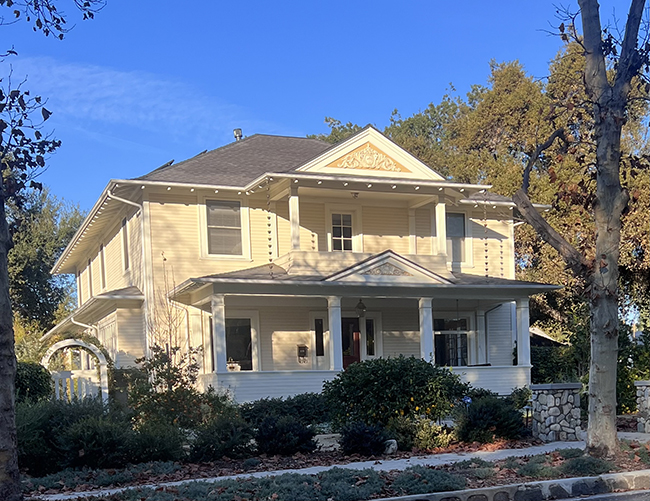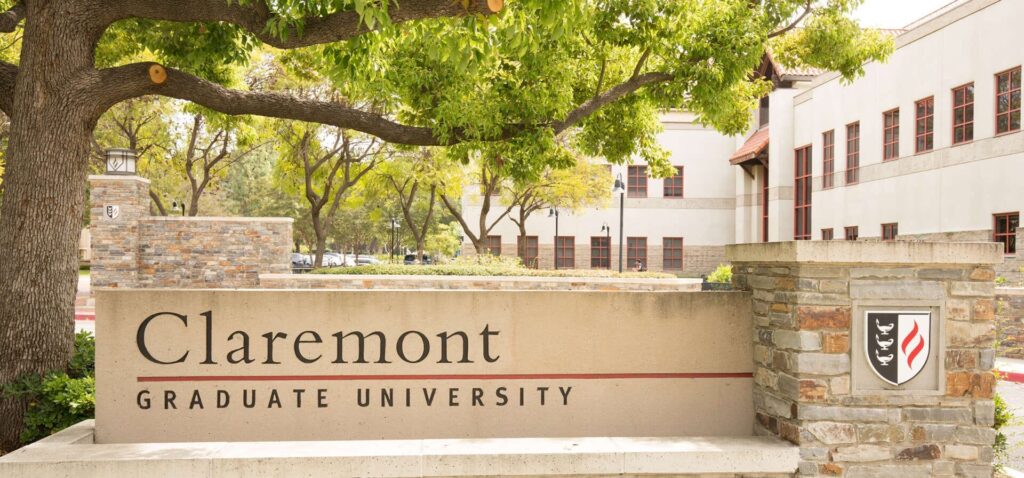The benefits of owning and restoring historic homes

The Mills Act is an economic incentive for owners to restore historic homes such as this one on Sixth Street. Photo/courtesy of John Neiuber
by John Neiuber
Some years ago a family I knew lived in a very nice home above Foothill Boulevard, just off Mountain Avenue. There was a divorce, and the mother and her children remained in the home. However, as often is the case in these situations, financial considerations changed.
I visited one day, and the family was in tears. The mother had just announced that they would need to move, probably below Foothill. Heaven forbid!
This was a time when the older, historic homes of the Village were not as desirable and much more affordable. Many had not been maintained and people had moved to newer neighborhoods for homes with more modern conveniences. This was prior to the historic preservation movement in Claremont and before the creation and placement of properties on the local historic register.
Things have changed. The historic homes of Claremont are some of the most desirable in the city. Today, historic homes appreciate at higher rates than properties elsewhere. When looking at sales in Claremont, historic homes on average garner higher per square foot sales prices than other properties. According to Place Economics, it is not uncommon for increases in property values to be boosted by 5% to 20% depending on the features of the home or the neighborhood.

Historic homes have interesting, often one-of-a-kind features and varying architectural styles, as found on this Craftsman home on Indian Hill Boulevard. Photo/courtesy of John Neiuber
Another benefit of historic homes is seen during economic downturns. In the last recession, Place Economics found homes outside of local historic districts had foreclosure rates three times that of historic homes.
Location and “walkability” are another benefit of owning an historic home. As cities develop, they expand outward, resulting in older homes and neighborhoods being closer to downtown. Such was the case with Claremont. It’s common for real estate listings to describe a home as being in the Village, when the actual Village area as defined by the city contains few homes. Location, location, location!
Older homes have a distinctive character and help to define a sense of place. Historic homes have one-of-a-kind features, are of varying interesting architectural styles and details, and feature quality materials and craftsmanship. Historic homes are often made more interesting by the people who built them and occupied them, and embody the history of the town.
Architect Carl Elefante said, “The greenest building is the one already built.” Owning and restoring an historic home is environmental sustainability at its best. The embodied energy in a historic structure cannot be regained once lost. With today’s technology, historic homes can be made to be as efficient as new LEED certified homes. And historic restoration equals jobs. Restoration is more labor intensive than new construction and saves natural resources, not to mention impacts on landfills receiving the results of demolition.

The exterior of this historic, architecturally stunning residence on Harvard Avenue was used as the home of “Maude” in the television series of the same name that ran from 1972 to 1978. Photo/courtesy of John Neiuber
The National Trust for Historic Places’ Research and Policy Lab studied the environmental impact of restoring and retrofitting an older home versus building a new energy efficient one. Their results showed it takes 10 to 80 years for the operating savings of a new “green” building to overcome the negative climate change impacts of the construction process. Demolishing one modestly sized house generates an average of 62.5 tons of landfill waste.
Because historic homes tend to have less owner turnover and a higher rate of long-term ownership, there is greater connection to the community and local heritage. This results in increased civic engagement and pride. Historic designation helps to preserve communities by discouraging demolition, and reduces uncertainty for property owners from inappropriate development.
Another benefit of owning and restoring an historic home is the economic incentive for homeowners under the Mills Act. Enacted by California in 1972, the Mills Act grants participating cities and counties the authority to enter into contracts with owners of qualified historic properties who actively participate in the restoration and maintenance of those properties. The Claremont City Council approves no more than six contracts during any one calendar year based on five criteria, all of which must be met. In return, property owners’ property tax bills are reduced by about half. The Mills Act is a vital economic incentive in California, and specifically in Claremont, for the restoration and preservation of qualified historic buildings by private homeowners. It is a tool at the disposal of the city and homeowners to ensure the historic fabric of the community is enjoyed by the citizens for generations to come.
Historic home ownership has many benefits. Claremont has enjoyed a commitment on the part of its citizens, commissioners, elected officials, city staff, and Claremont Heritage to historic preservation. Today, we have a vital, historic Village, historic homes, and well maintained neighborhoods that define the livability of Claremont and drives a robust economy.










0 Comments